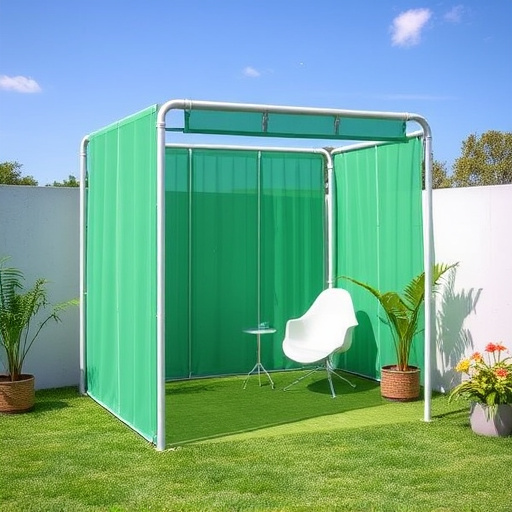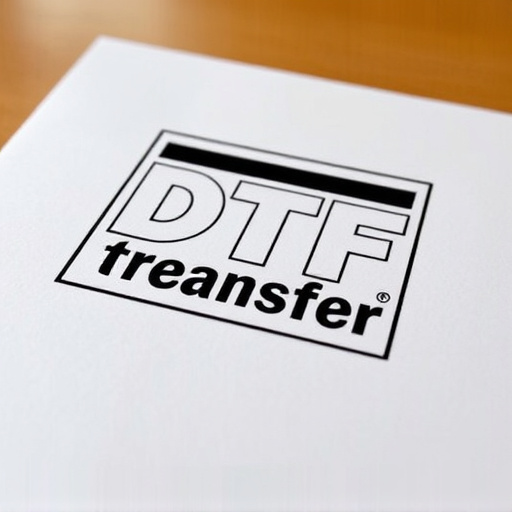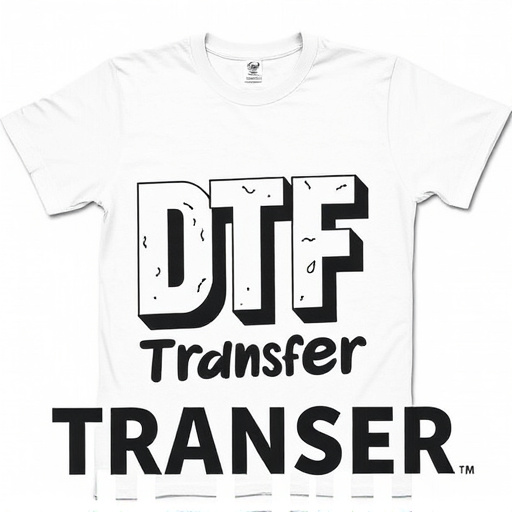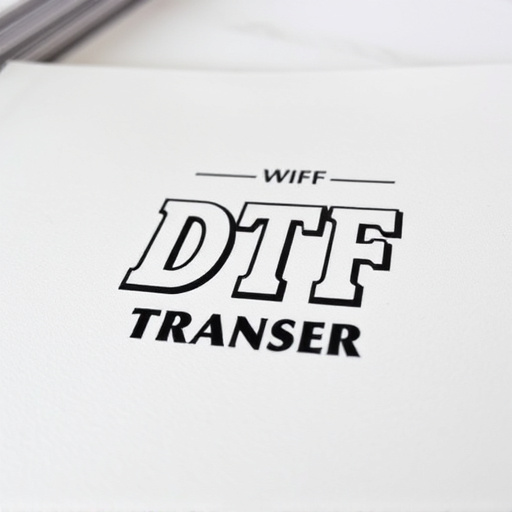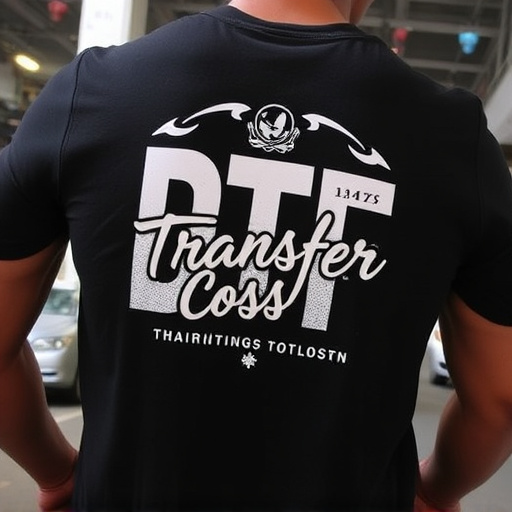Direct-to-fabric (DTF) transfer printing is a cutting-edge technique for creating vibrant, durable designs on various fabrics. Using special inks and advanced polymers, DTF allows for intricate molecular bonding with polyester fibers, resulting in high-quality prints. This versatile method streamlines production, reduces waste, and caters to both commercial and personal projects. With the right DTF ink and substrate choices, along with a step-by-step process guided by quality assurance measures, individuals and businesses can effortlessly bring their design visions to life, including applications in fashion and home decor.
Discover the innovative world of DTF Transfer—a game-changer in DTF Printing that seamlessly fuses designs onto polyester fabrics. This comprehensive guide explores the science and benefits behind this technique. From understanding the DTF Transfer process to choosing the right DTF Ink and substrates, we demystify each step. Learn how to achieve high-quality DTF Prints with expert tips on application and curing techniques. Elevate your textile printing game with the power of DTF Transfer.
- Understanding DTF Transfer: A Comprehensive Overview
- The Science Behind Adherence to Polyester Fabrics
- Benefits of Using DTF for Textile Printing
- Choosing the Right DTF Ink and Substrates
- Step-by-Step Guide: Applying DTF Prints
- Quality Assurance and Curing Techniques for DTF Transfer
Understanding DTF Transfer: A Comprehensive Overview
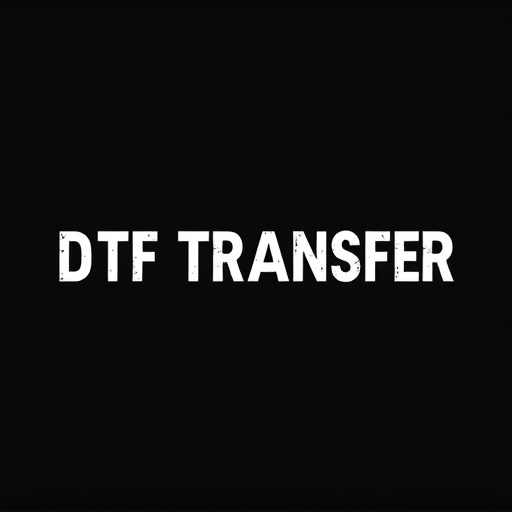
Direct-to-fabric (DTF) transfer printing is a revolutionary technique that has transformed the way we adorn and personalize polyester fabrics. This modern approach offers a diverse range of creative possibilities, allowing for intricate designs and vibrant prints directly onto various materials. DTF involves a precise process where ink is transferred from a plate or screen to a fabric surface using heat and pressure, creating long-lasting, high-quality DTF prints.
The beauty of this method lies in its versatility; it can be applied to numerous fabrics, including cotton, linen, and polyester, making it an attractive option for both commercial and personal projects. With advancements in technology, DTF printing has become increasingly accessible, enabling individuals and businesses alike to bring their design ideas to life with ease. This comprehensive overview highlights the fundamentals of DTF transfer, offering a glimpse into the world of innovative fabric customization.
The Science Behind Adherence to Polyester Fabrics

The science behind DTF (Direct to Fabric) transfers and their adherence to polyester fabrics lies in a precise interplay of chemistry and technology. DTF printing involves applying a special ink directly onto the fabric, where it bonds permanently at a molecular level. This process leverages advanced polymers designed to cling firmly to polyester’s smooth surface, ensuring vibrant and long-lasting DTF prints.
The key to this adherence lies in the ink composition. Specialized DTF inks contain unique combinations of resins and additives that react with the fabric during heating. The heat activates a chemical reaction, causing the ink to cure and crosslink with the polyester fibers, resulting in exceptional bond strength. This direct bonding allows for sharp details, rich colors, and durability—all hallmarks of high-quality DTF transfers.
Benefits of Using DTF for Textile Printing

Using Direct-to-Fabric (DTF) transfer technology for textile printing offers a plethora of advantages over traditional methods. One of the key benefits is its versatility; DTF allows for high-quality prints on various polyester fabrics, including clothing, home textiles, and accessories. This technology ensures that designs are crisp, vibrant, and long-lasting, meeting the demands of modern fashion and interior design trends.
DTF printing provides an efficient workflow, streamlining production processes. With its ability to print directly onto fabric without intermediate steps, it reduces waste and turnaround time significantly. Additionally, DTF transfers offer excellent durability, making them suitable for outdoor applications and ensuring that DTF prints remain vibrant even under harsh conditions.
Choosing the Right DTF Ink and Substrates

When it comes to creating high-quality DTF (Direct to Fabric) transfers for polyester fabrics, selecting the appropriate DTF ink and substrates is a critical step in the process. The right choice ensures vibrant, long-lasting DTF prints that resist fading and maintain their richness over time.
Modern DTF inks offer various advantages, including excellent color saturation and quick drying times. They are designed to adhere seamlessly to polyester, allowing for detailed and precise DTF transfer patterns. Substrates, or the fabric itself, should be carefully considered too; a suitable polyester base ensures smooth application and prevents the ink from cracking or peeling over time. Opting for high-quality materials guarantees professional results, making your final products stand out and cater to a wide range of applications, from fashion to home decor.
Step-by-Step Guide: Applying DTF Prints

Step-by-Step Guide: Applying DTF Prints
To achieve high-quality results with Direct to Fabric (DTF) transfers, follow this straightforward process. First, prepare your polyester fabric by cleaning it thoroughly and ensuring it’s free from any contaminants. Next, design or source the artwork you wish to print using DTF printing software, ensuring the resolution is optimal for crisp details. Then, set up your DTF printer with the correct settings according to the manufacturer’s guidelines. Load the polyester fabric onto the press, making sure it’s secure and aligned properly.
Once ready, start the printing process, allowing the DTF ink to fuse directly into the fabric fibers. After printing, carefully remove the fabric from the press and let it cool down slightly. Finally, cure the print by ironing it at a low temperature or following the recommended heat press cycle for optimal color fastness and durability. The result will be vibrant, long-lasting DTF prints adhering perfectly to your polyester fabric.
Quality Assurance and Curing Techniques for DTF Transfer

The quality of a DTF (Direct-to-Fabric) transfer is heavily dependent on rigorous Quality Assurance (QA) processes throughout the production line. This includes meticulous inspections at each stage, from material preparation to the final print and cure. QA for DTF involves verifying color accuracy, ensuring consistent ink thickness, and checking for any defects or misalignments in the design. Advanced imaging techniques and specialized equipment are employed to detect even the smallest imperfections in the prints, guaranteeing high-resolution and vibrant DTF prints.
Curing is a critical step in DTF printing that determines the durability and longevity of the transferred designs. Various curing techniques are utilized to set the ink and fuse it with the polyester fabric. These include heat pressing, UV (ultraviolet) curing, and air drying. Heat pressing involves applying controlled heat and pressure for a specific duration, while UV curing uses powerful lights to rapidly harden the ink. The chosen method depends on factors like ink type, fabric composition, and desired finish, ensuring optimal results for each DTF transfer.




